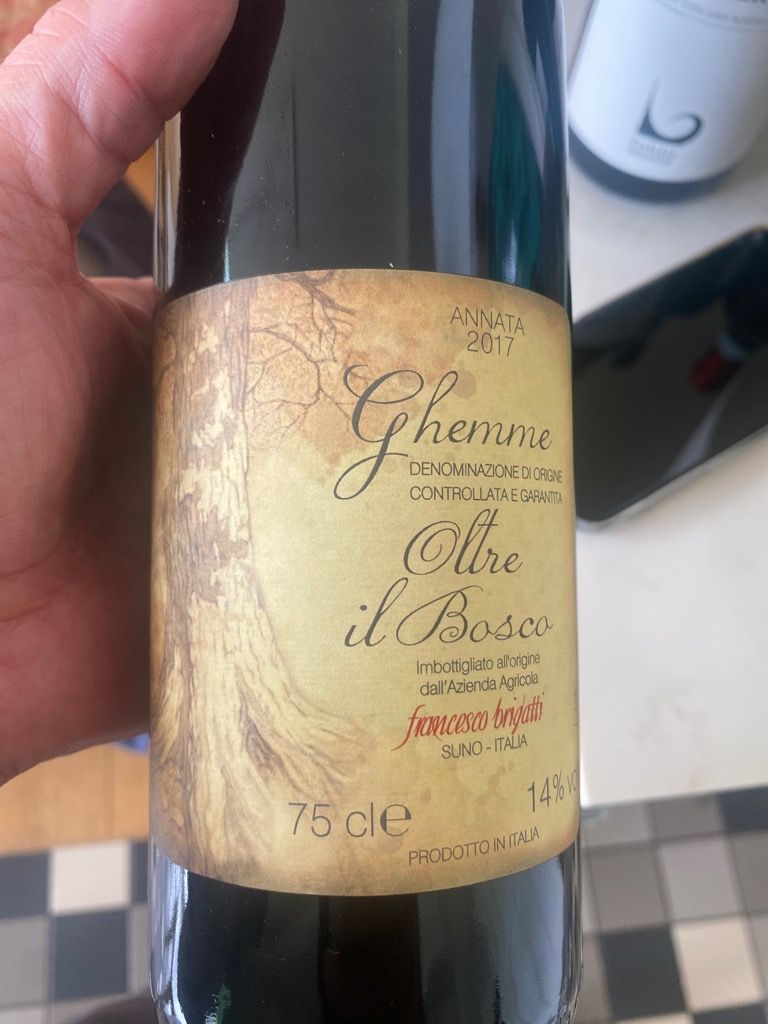
External search
Google (images)
Wine Advocate
Wine Spectator
Burghound
Wine-Searcher
Vintages
2019
2018
2017
2016
2015
2014
2013
2012
2011
2010
2009
From this producer
Show all wines
All tasting notes
|
| Drinking Windows and Values |
| Drinking window: Drink between 2025 and 2033 (based on 4 user opinions) |
| Community Tasting History |
| Community Tasting Notes (average 87.5 pts. and median of 87 pts. in 2 notes) - hiding notes with no text | | | Tasted by xzz on 3/24/2024 & rated 84 points: Farge: Litt blek nebbiolo
Duft: Svakt innestengt tørr kjeller
Smak: Litt tynn og tørr Smak. Uåpnet.
Etter hvert røffe tanniner. Noe surkirsebær og hint av krekling/kreke
Dag 2
Duft: Litt frisk frukt med hint av noe treverk og medisinskrin.
Smak: Kraftige tanniner. Kreke og noe slåpe.
Virker litt flat.
Er noe usikker på om det er nok utviklingspotensiale i denne. (73 views) | | | Tasted by Derek Darth Taster on 7/15/2023 & rated 91 points: Off the wine list over dinner at Little Italy. Re-tasted at home in Conterno Sensory.
Appearance is clear, pale intensity, ruby colour. Legs.
Nose is clean, medium intensity, with aromas of red cherries, earth, cool stony minerals. Developing.
On the palate, dry, high acidity, medium+ alcohol (14%), high tannins, full body. Medium+ flavour intensity, with flavours of juicy sour red cherry, bit of black cherry, spice, earth, indistinct stony minerals. Feels coiled at the moment. Needs more age to open up.
I was expecting more approachability from a 2018 but I guess is not a simple affair of extrapolating the 2018 Barolo conditions to Ghemme. (441 views) |
| NebbioloNebbiolo is a red grape indigenous to the Piedmont region of Italy in the Northwest. The grape can also be found in other parts of the world, though they are not as respected.
Nebbiolo is often considered the "king of red wines," as it is the grape of the famed wines of Barolo DOCG, Barbaresco DOCG, and Roero DOCG. It is known for high tannins and acidity, but with a distinct finesse. When grown on clay, Nebbiolo can be very powerful, tannic, and require long aging periods to reach its full potential. When grown on sand, the grape exhibits a more approachable body with more elegant fruit and less tannins, but still has high aging potential.
"Nebbiolo" is named for the Italian word, "nebbia", which means "fog", in Italian and rightfully so since there is generally a lot of fog in the foothills of Piedmont during harvest.
Nebbiolo is a late-ripening variety that does best in a continental climate that boasts moderate summers and long autumns. In Piedmont, Nebbiolo is normally harvested in October.
More links:
Varietal character (Appellation America) | Nebbiolo on CellarTrackerItaly Italian Wines (ItalianMade.com, The Italian Trade Commission) | Italian Wine Guide on the WineDoctorPiedmont Vignaioli Piemontesi (Italian only)
On weinlagen-infoNorthern PiedmontRegional History:
The wines of Piemonte are noted as far back as Pliny's Natural History. Due to geographic and political isolation, Piemonte was without a natural port for most of its history, which made exportation treacherous and expensive. This left the Piemontese with little incentive to expand production. Sixteenth-century records show a mere 14% of the Bassa Langa under vine - most of that low-lying and farmed polyculturally. In the nineteenth century the Marchesa Falletti, a French woman by birth, brought eonologist Louis Oudart from Champagne to create the first dry wines in Piemonte. Along with work in experimental vineyards at Castello Grinzane conducted by Camilo Cavour - later Conte di Cavour, leader of the Risorgimento and first Prime Minister of Italy - this was the birth of modern wine in the Piedmont. Outside of the Langhe, the most prominent area of wine production in Piemonte is the chain of sub-alpine hills that run through the provinces of Novara and Vercelli. Here the Romans introduced spionia, an ancient variety that thrived in foggy climates. Whether this was in fact a genetic ancestor of Nebbiolo is unknown, but the derivation of its name, Spanna, is now how the locals refer to this noble grape. The Morainic soils, mostly deposited along the Sesia River, are of glacial origin and produce more medium-bodied, aromatically driven nebbiolo than in the Langhe. The appellations of note in Novara are Gattinara, Lessona and Bramaterra, and in Vercelli are Ghemme, Fara, Boca, and Szizzano.
Ghemme On weinlagen-info |
|




